
Apartment block in Kyiv (Oleksandr Koshyts Street, 7-A) after hitting by remains of a downed Russian missile during Russian invasion of Ukraine. Wikimedia Commons.
One year ago the war began.
This morning I re-read the short essay I posted on our Fierce Urgency blog (“The night of February 23, 2022″) and reflected on the months of horrific violence that followed. (The night of February 23 here in California was already February 24 in Ukraine, the official starting date of Russia’s war of aggression.).
A year ago I wrote:
“This night will be remembered a hundred years from now, if we live that long as a species, alongside other dark nights in the twisted history of human civilization over the past barbaric century, nights in which extended nightmares of carnage began….
Tonight the leader of Russia, and those in his regime, have committed the crime of aggression under international law.
Many more crimes are certain to follow.”
One year ago, I asked a series of questions:
“How many people will die following this night?
How many civilians?
How many will die from bombs and artillery?
How many will be wounded, dismembered, crushed in body and spirit?
How many millions will be forcibly displaced from their homes?
How many refugees will flood into Europe? Will they be received with open arms or closed borders?
How will the politics and economies of Europe, Russia, China and the United States be impacted, and distorted?
How will the worst in every country, full of passionate intensity, respond?”
We now have answers to these questions, at least thus far, in the war’s first year, even as the numbers are intensely disputed; for comparative data, see for example here, here, here and here.
The Norwegian Chief of Defense estimates that 30,000 Ukrainian civilians were killed in the first year of the war, with an additional 100,000 Ukrainian fighters dead or wounded. The European Commission also estimated a 100,000 Ukrainian military casualties, an estimate that Ukraine’s government has stated that far less of its soldiers were killed this year, somewhere between 10,000 and 13,000).
Ukraine’s government claims that almost 146,000 Russian soldiers had been killed in the war. According to the New York Times, the number of Russian troops killed and wounded in Ukraine is approaching 200,000. Moscow has been silent since September 2022, when it claimed that 5,937 troops had been killed. According to the Moscow Times today, the number is 15,000, a number that appears to be an extreme undercount. We will never know how many Russians have died, and how many more will be sent to perish in this senseless war. Whatever the number, is staggering. These countless souls are victims of Putin’s war of aggression no less than the Ukrainians murdered in the battlefield, or in their apartments as they sleep, or in hospitals or schools or on the street.
The UN High Commissioner for Human Rights confirms in its official documentation that at least 8,006 Ukrainian civilians were killed and 13,287 injured over the past 12 months. But the total numbers of civilian casualties are likely to be very much higher. According to UN High Commissioner Volker Türk, “our data are only the tip of the iceberg.”
“The toll on civilians is unbearable. Amid electricity and water shortages during the cold winter months, nearly 18 million people are in dire need of humanitarian assistance. Some 14 million people have been displaced from their homes.”
And this is how Human Rights Watch summarizes the experience of the past year on the people of Ukraine:
“Since Russia’s full-scale invasion in 2022, its war against Ukraine has had a disastrous impact on civilian life, killing thousands of civilians, injuring many thousands more, and destroying civilian property and infrastructure. Russian forces committed a litany of violations of international humanitarian law, including indiscriminate and disproportionate bombing and shelling of civilian areas that hit homes and healthcare and educational facilities. Some of these attacks should be investigated as war crimes. In areas they occupied, Russian or Russian-affiliated forces committed apparent war crimes, including torture, summary executions, sexual violence, enforced disappearances, and looting of cultural property. Those who attempted to flee areas of fighting faced terrifying ordeals and numerous obstacles; in some cases, Russian forces forcibly transferred significant numbers of Ukrainians to Russia or Russian-occupied areas of Ukraine and subjected many to abusive security screenings. Russian forces’ countrywide, repeated attacks on Ukraine’s energy and other critical infrastructure appeared aimed at terrorizing civilians and making their life unsustainable, which is a war crime.”
Now, one year later, as the war grinds on, relentlessly, as it escalates and intensifies, it is time to grieve.
This is a from an essay of mourning from Tom Nichols (“The War in Ukraine Is the End of a World”):
“I grieve for the innocent people of Ukraine, for the dead and for the survivors, for the mutilated men and women, for the orphans and the kidnapped children. I grieve for the elderly who have had to live through the brutality of the Nazis and the Soviets and, now, the Russians. I grieve for a nation whose history will be forever changed by Putin’s crimes against humanity.
And yes, I grieve, too, for the Russians. I care not one bit for Putin or his criminal accomplices, who might never face justice in this world but who I am certain will one day stand before an inescapable and far more terrifying seat of judgment. But I grieve for the young men who have been used as “cannon meat,” for children whose fathers have been dragooned into the service of a dictator, for the people who once again are afraid to speak and who once again are being incarcerated as political prisoners.”
One year ago, I wrote:
“I fear that the repercussions of this night — for al of us — are far beyond what any of us understand or imagine.
“Injustice anywhere is a threat to justice everywhere,” Martin Luther King, Jr. wrote in the Letter from Birmingham Jail. “We are caught in an inescapable network of mutuality, tied in a single garment of destiny.”
Is this true or false? Do we believe it, or only pay lip service to these fine words?”
In conclusion, I share some photographs from the past year.
Here are some photographs of the war itself. I self-censored to remove photos of dead bodies in the street, or other images that might trigger in the viewer a moment of fear, terror and dread that millions feel every night. I looked for photos that evoke this reality without showing it directly. I also tried to find photos that are in the public domain, or protected under a Creative Commons license. If I erred in my choices, I did not mean to shock or exploit. It remains true that sometimes a photo can convey more than words can express.

(Photo: Kyiv City State Administration, Oleksiі Samsonov). Date 5 April 2022, Source КМДА, Олексій Самсонов
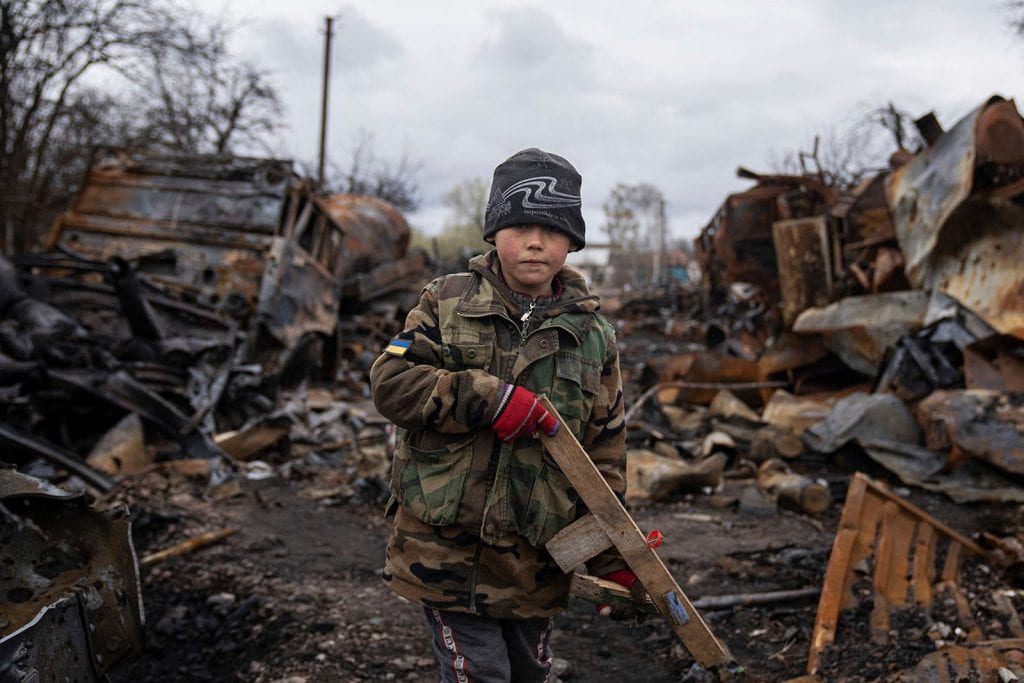
Yehor, 7, stands holding a wooden toy rifle next to destroyed Russian military vehicles near Chernihiv, Ukraine, Sunday, April 17, 2022. (AP Photo/Evgeniy Maloletka).
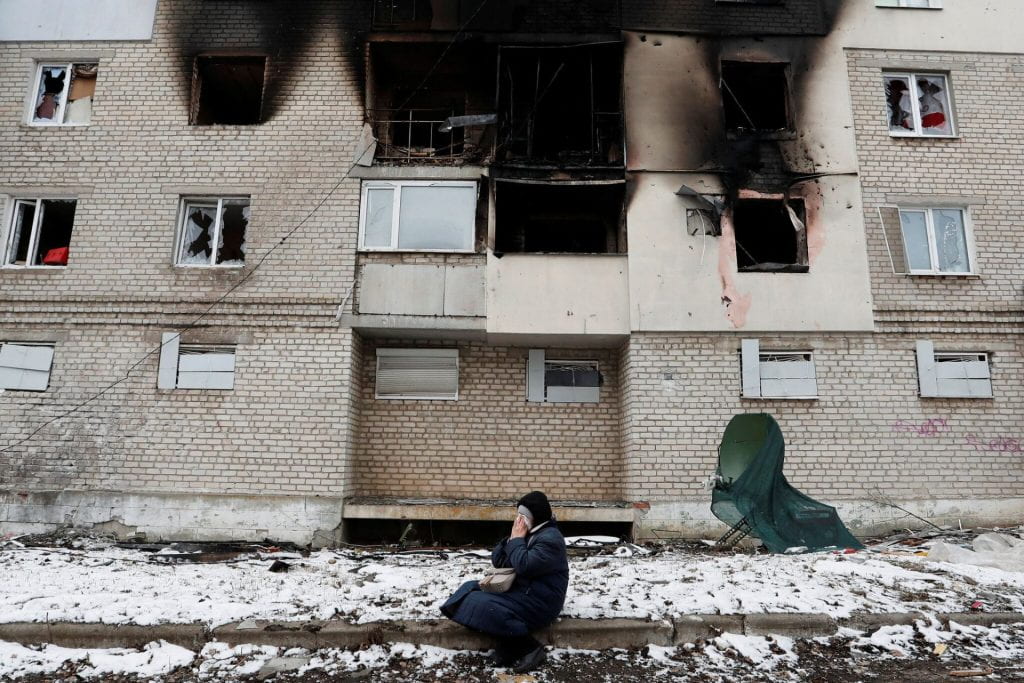
Friday, March 11, In Volnovakha, Ukraine, in the separatist-controlled region of Donestk, a woman grieving outside a building damaged in the fighting between Russian and Ukrainian forces.
Alexander Ermochenko/Reuters
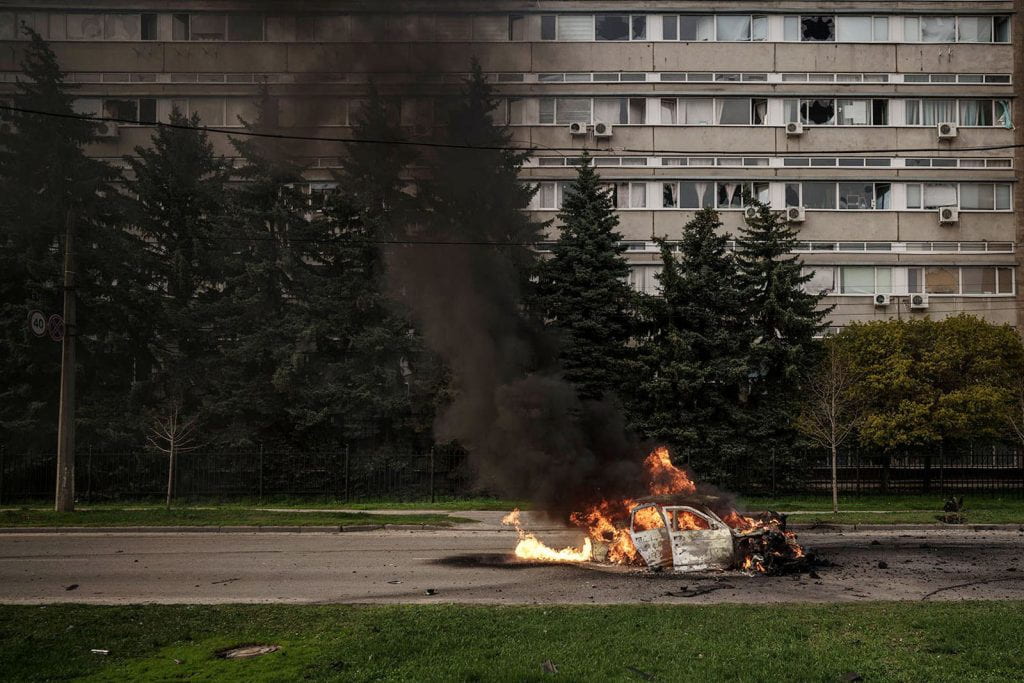
A car burns with two people inside, after a Russian bombardment in Kharkiv, Ukraine, Thursday, April 21, 2022. (AP Photo/Felipe Dana)

An elderly man is taken by two soldiers to the hospital after living for days in a shelter with limited food and water. Irpin, Ukraine, March 12, 2022. (Yan Boechat/VOA)
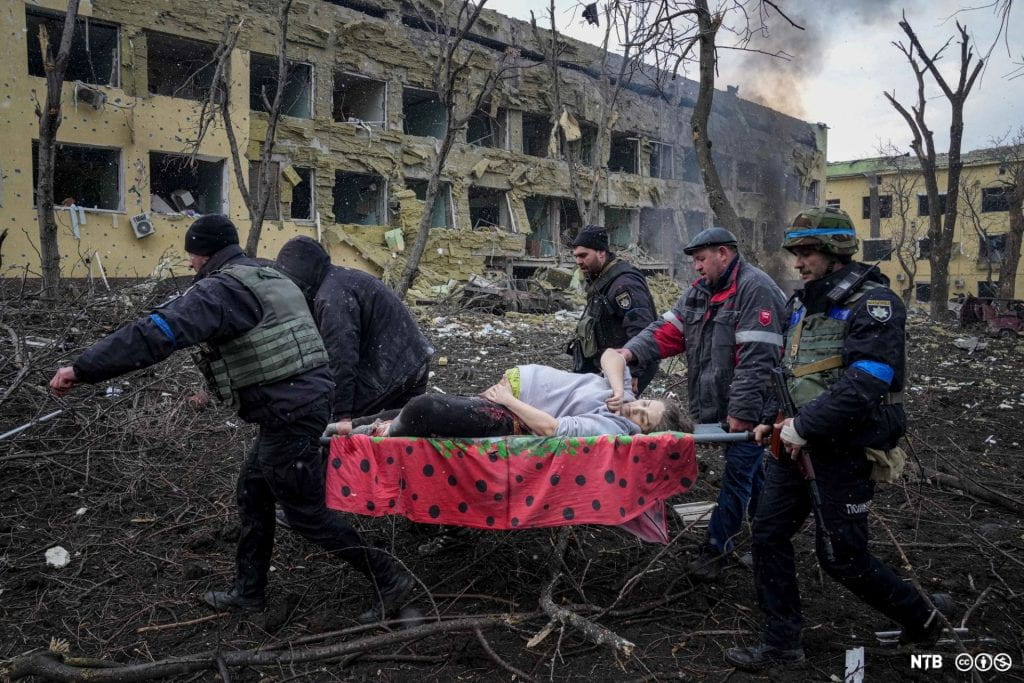
FILE – Ukrainian emergency employees and volunteers carry an injured pregnant woman from a maternity hospital that was damaged by shelling in Mariupol, Ukraine, March 9, 2022. The woman and her baby died after Russia bombed the maternity hospital where she was meant to give birth. (AP Photo/Evgeniy Maloletka, File)
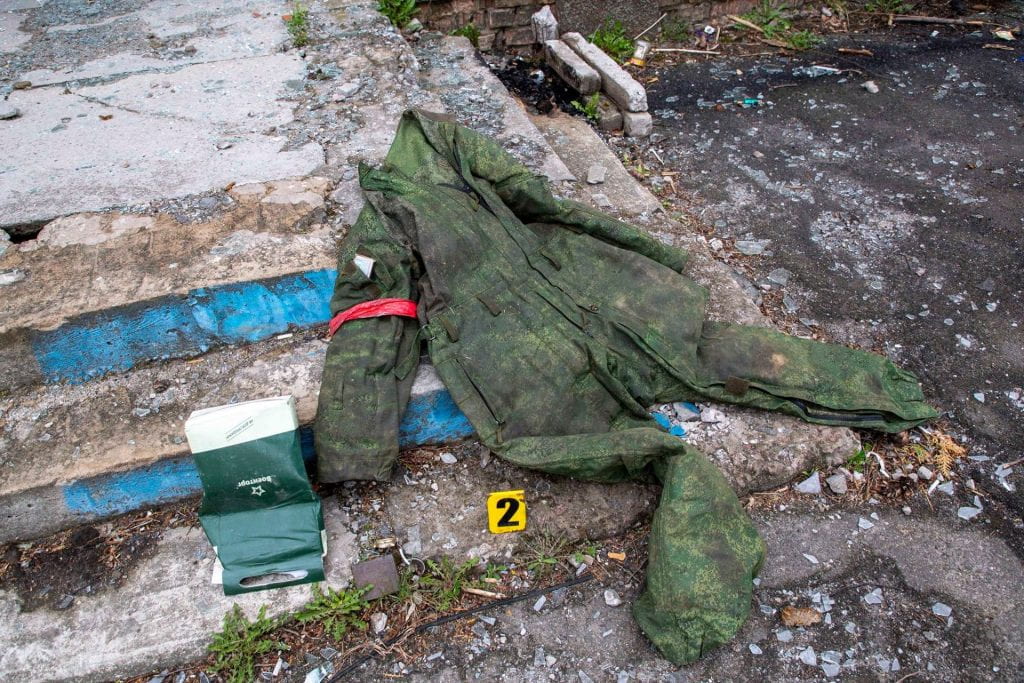
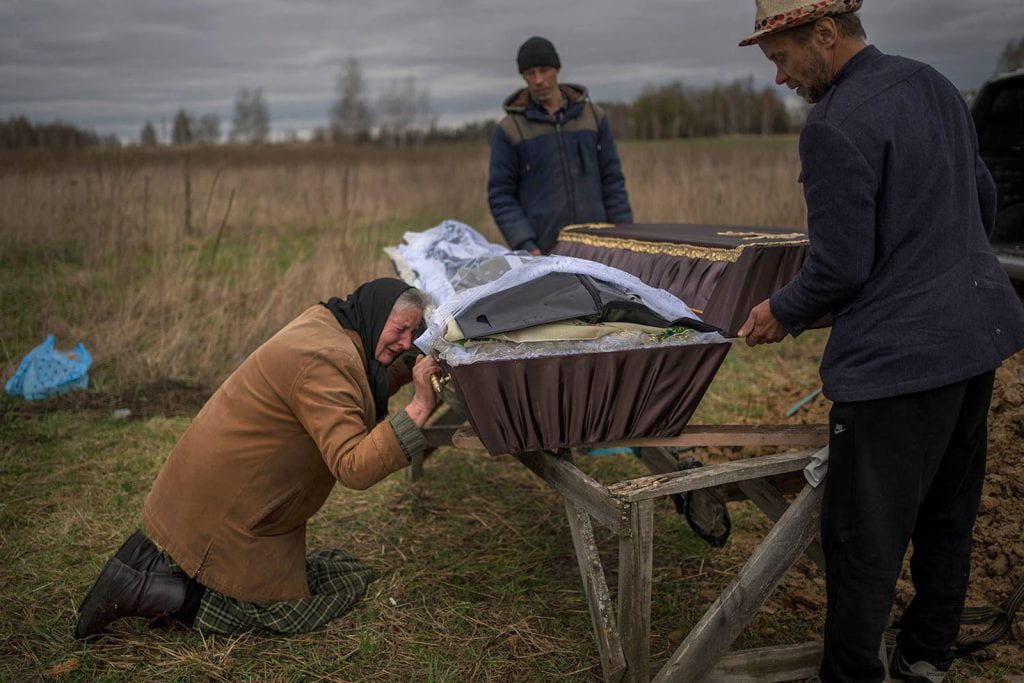
Nadiya Trubchaninova, 70, cries while holding the coffin of her son Vadym, 48, who was killed by Russian soldiers last March 30 in Bucha. Saturday, April 16, 2022. (AP Photo/Rodrigo Abd)

A woman walks amid destroyed Russian tanks in Bucha, in the outskirts of Kyiv, Ukraine, Sunday, April 3, 2022. (AP Photo/Rodrigo Abd)
And here are photographs of protests around the world, in a variety of forms:
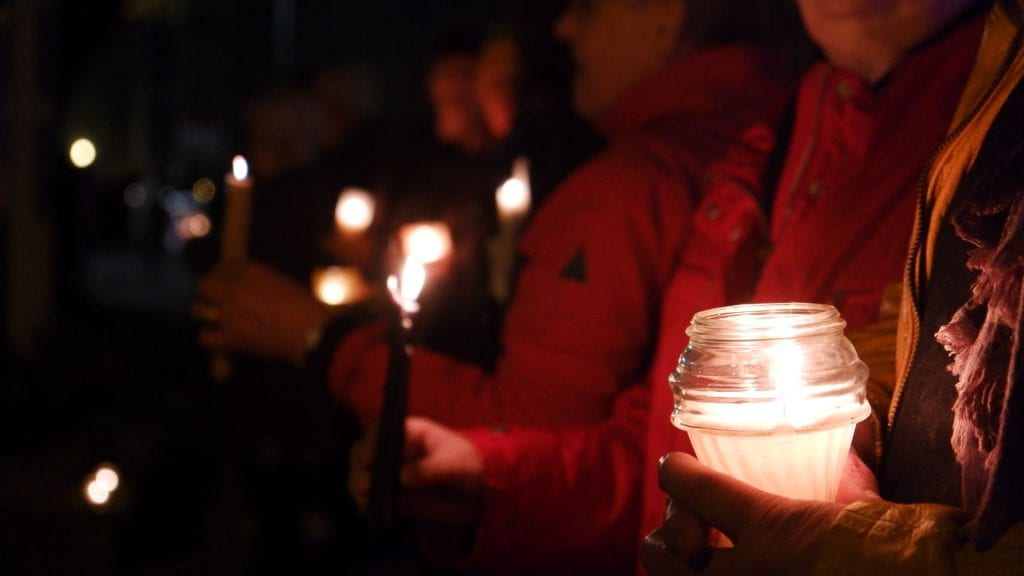
Human chain against the war in Ukraine, Suderwick and Dinxperlo, 12 March 2022. Ziko, CC via Wikimedia Commons
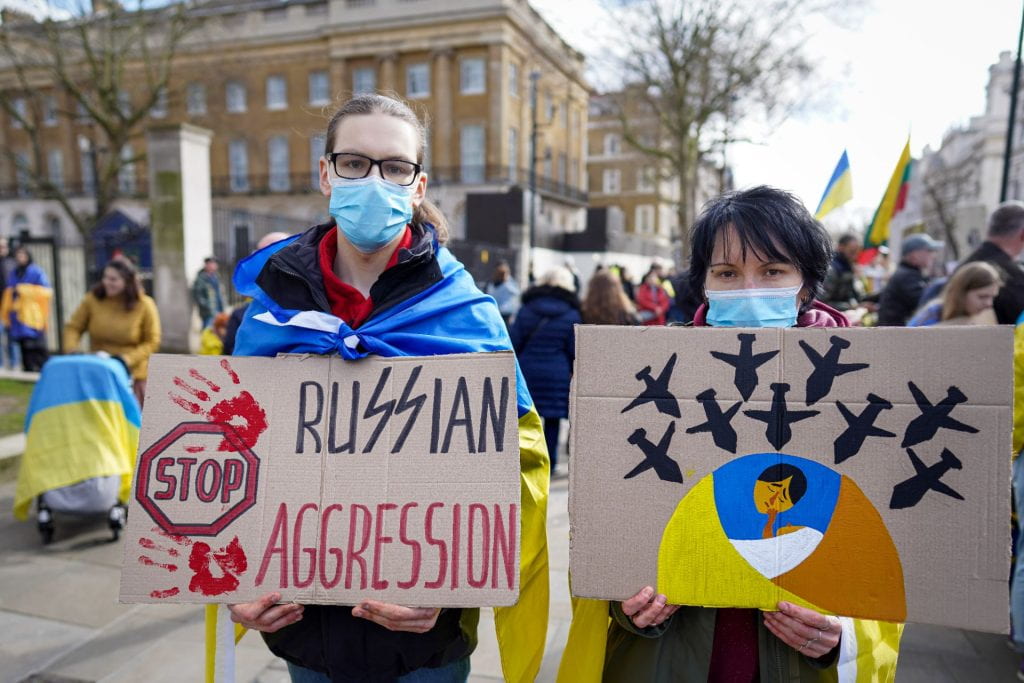
12 March 2022, 15:03l Source A War of Aggression; Author Alisdare Hickson from Woolwich, United Kingdom
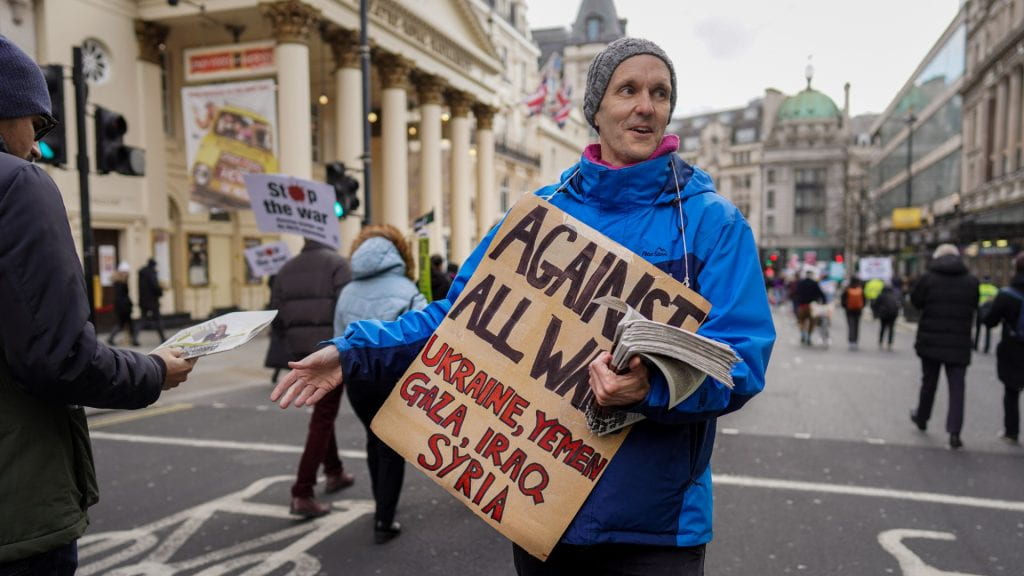
6 March 2022, 15:03l Source A War of Aggression; Author Alisdare Hickson from Woolwich, United Kingdom
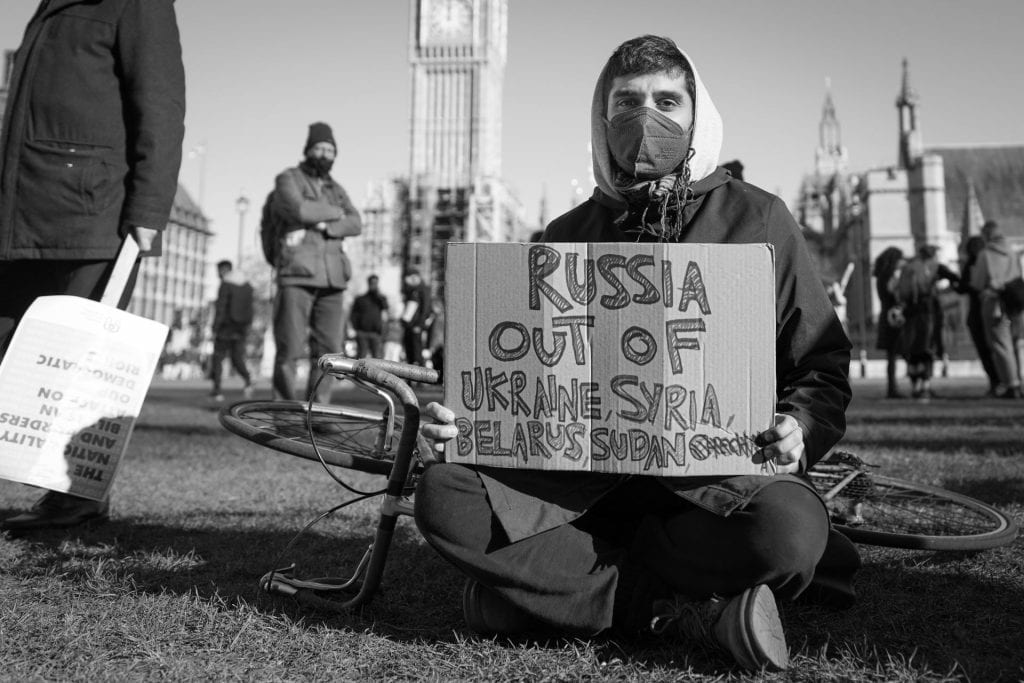
27 February 2022, Alisdare Hickson from Woolwich, United Kingdom
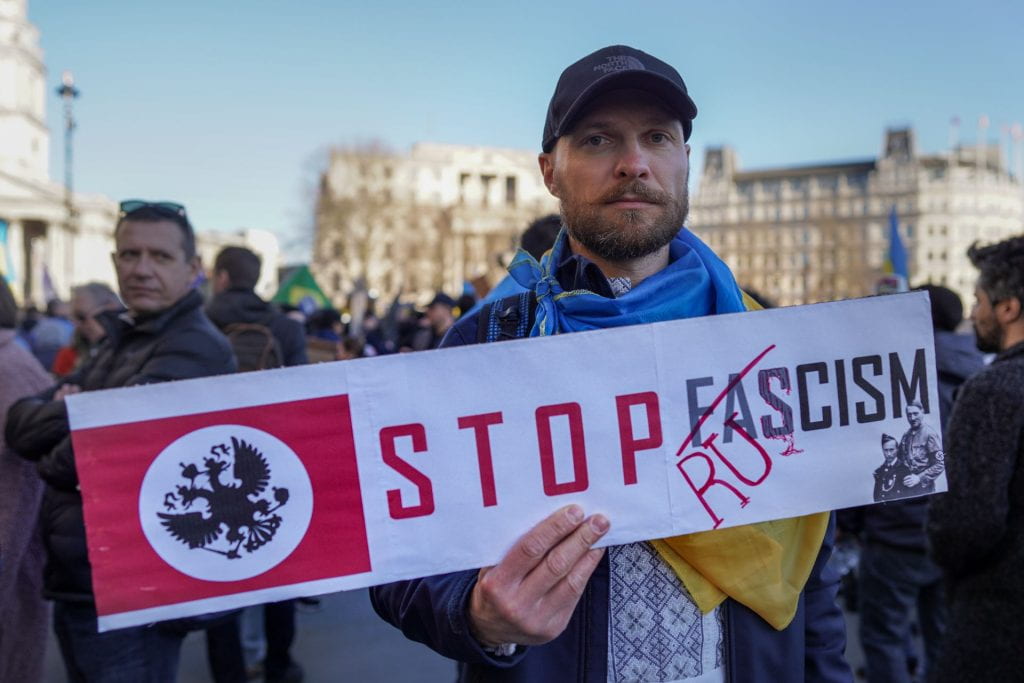
27 February 2022, Author Alisdare Hickson from Woolwich, United Kingdom


6 March 2022, Source Sweden Stands With Ukraine; Author Alisdare Hickson from Woolwich, United Kingdom

I’m from Russia. I am totally ashamed of the actions of our government in relation to Ukraine. This disgusting war must be stopped.
25 February 2022, 22:26 Source Stop war Author Ivan from Russia
Jonathan D. Greenberg
